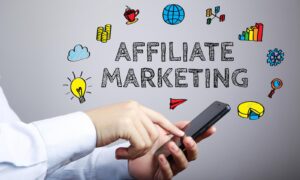Effective communication is the foundation of any successful business, and this is especially true for SaaS companies. With so much competition in the market, it’s essential to provide customers with the best possible experience. That’s where multichannel communication comes into your SaaS business.
The Advantages of Multichannel Communication for SaaS Businesses
Multichannel communication refers to the use of multiple channels to engage with customers. This includes email, social media, phone, chatbots, and video conferencing.
SaaS businesses can:
-
improve customer engagement and satisfaction
-
provide better customer support and retention
-
enhance lead generation and sales conversion
-
and improve collaboration and teamwork within the company.
One of the primary benefits of multichannel communication is increased customer engagement and satisfaction. Customers want to interact with businesses on their terms, whether that’s through email, social media, or chatbots. By offering multiple channels, businesses can meet customers where they are and provide a more personalized experience. This, in turn, leads to higher customer satisfaction and loyalty.
Another benefit of multichannel communication is improved customer support and retention. When customers have issues or questions, they want to get answers quickly and efficiently. With chatbots and phone support, businesses can provide timely and personalized responses that help retain customers.
Multichannel communication also enhances lead generation and sales conversion. By engaging with customers on multiple channels, businesses can increase brand awareness and build trust. This, in turn, leads to higher lead generation and sales conversion rates.
Moreover, multichannel communication improves collaboration and teamwork within the company. With the use of video conferencing and instant messaging, teams can work together more effectively and efficiently, regardless of their location.
Examples of Multichannel Communication
So, what are some examples of multichannel communication?
-
Email is one of the most common channels for customer engagement.
-
Chatbots can help businesses automate responses to common customer inquiries.
-
Social media is another powerful tool for customer engagement and brand awareness.
-
Phone support is essential for providing a personal touch to customer support.
-
Video conferencing is also useful for remote teams and for holding virtual meetings.
Best Practices for Multichannel Communication
To get the most out of multichannel communication, businesses should follow some best practices. First, it’s essential to maintain consistency and coherence across all channels. This means using the same branding, tone, and messaging across channels.
Personalization and customization of messages are also crucial to providing a tailored customer experience.
Automation and AI can help streamline communication and reduce response times.
Constant evaluation and optimization of channels can help ensure that the most effective channels are being used.
Conclusion
In conclusion, multichannel communication is essential for SaaS businesses that want to provide the best possible customer experience. Businesses can leverage multiple channels to improve customer engagement and satisfaction. This can provide better customer support and retention, as well as enhance lead generation and sales conversion. Additionally, it can improve collaboration and teamwork within the company.
To get the most out of multichannel communication, businesses should follow best practices. With the right approach, multichannel communication can help SaaS businesses build strong customer relationships and thrive in a competitive market



































